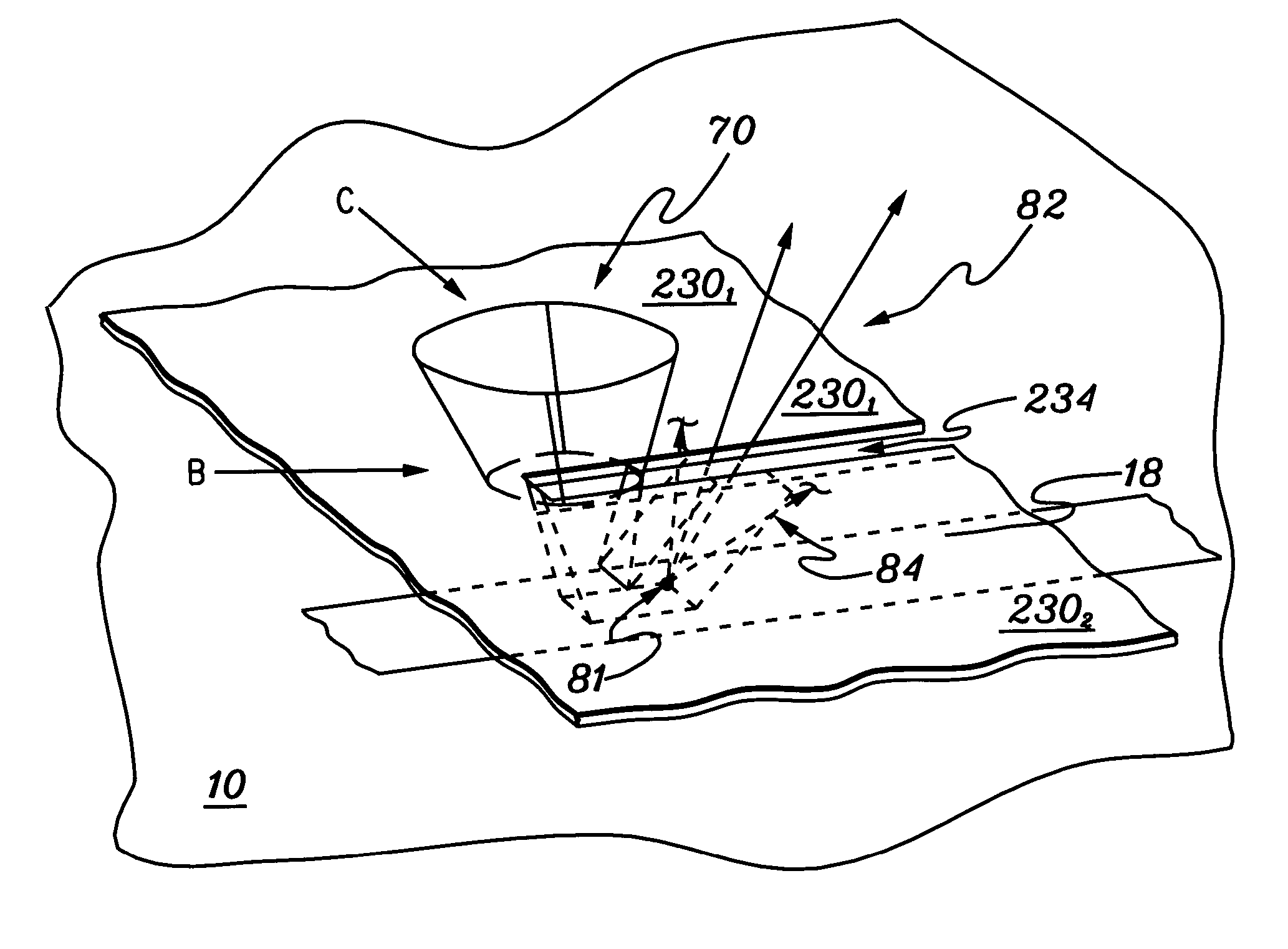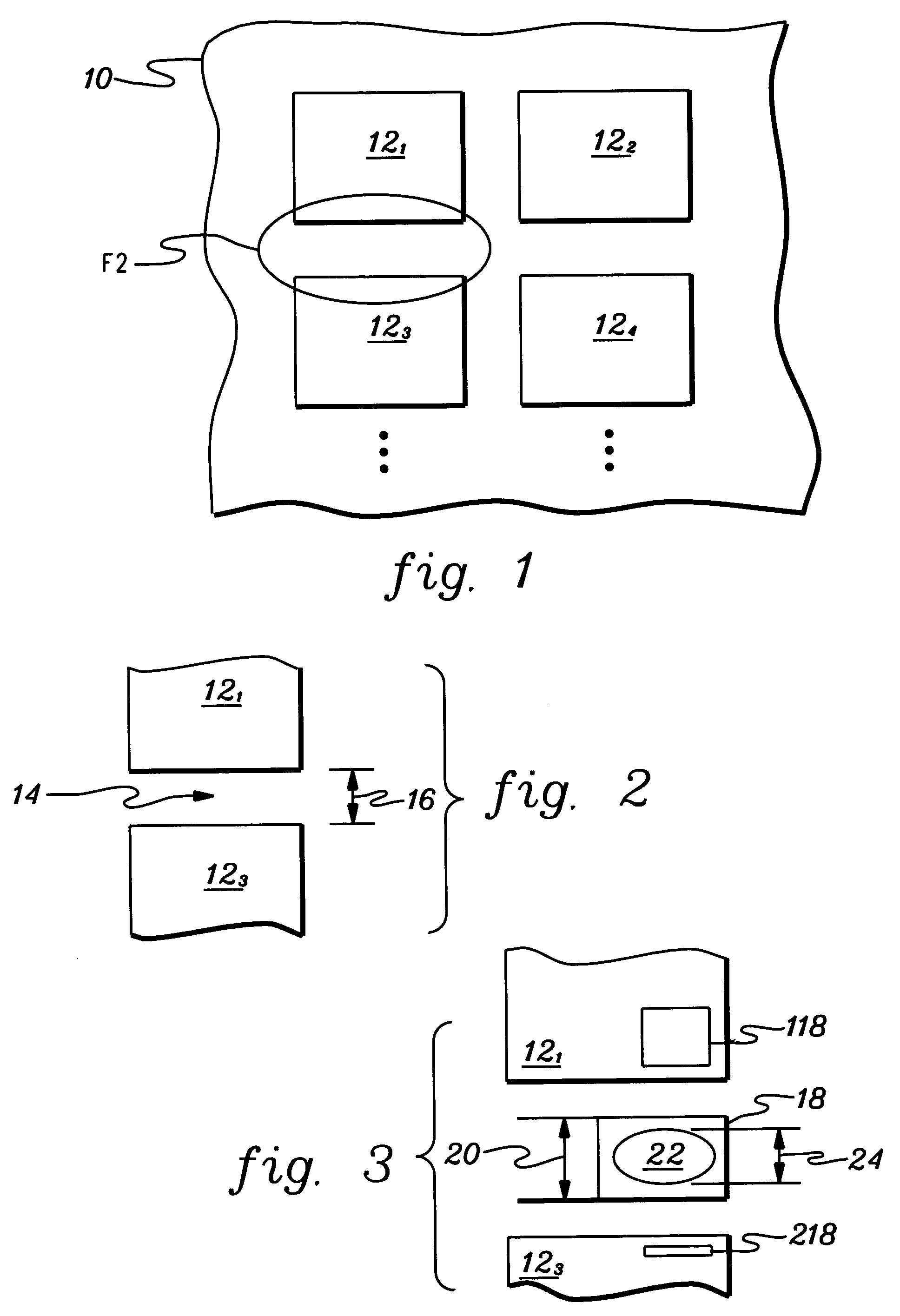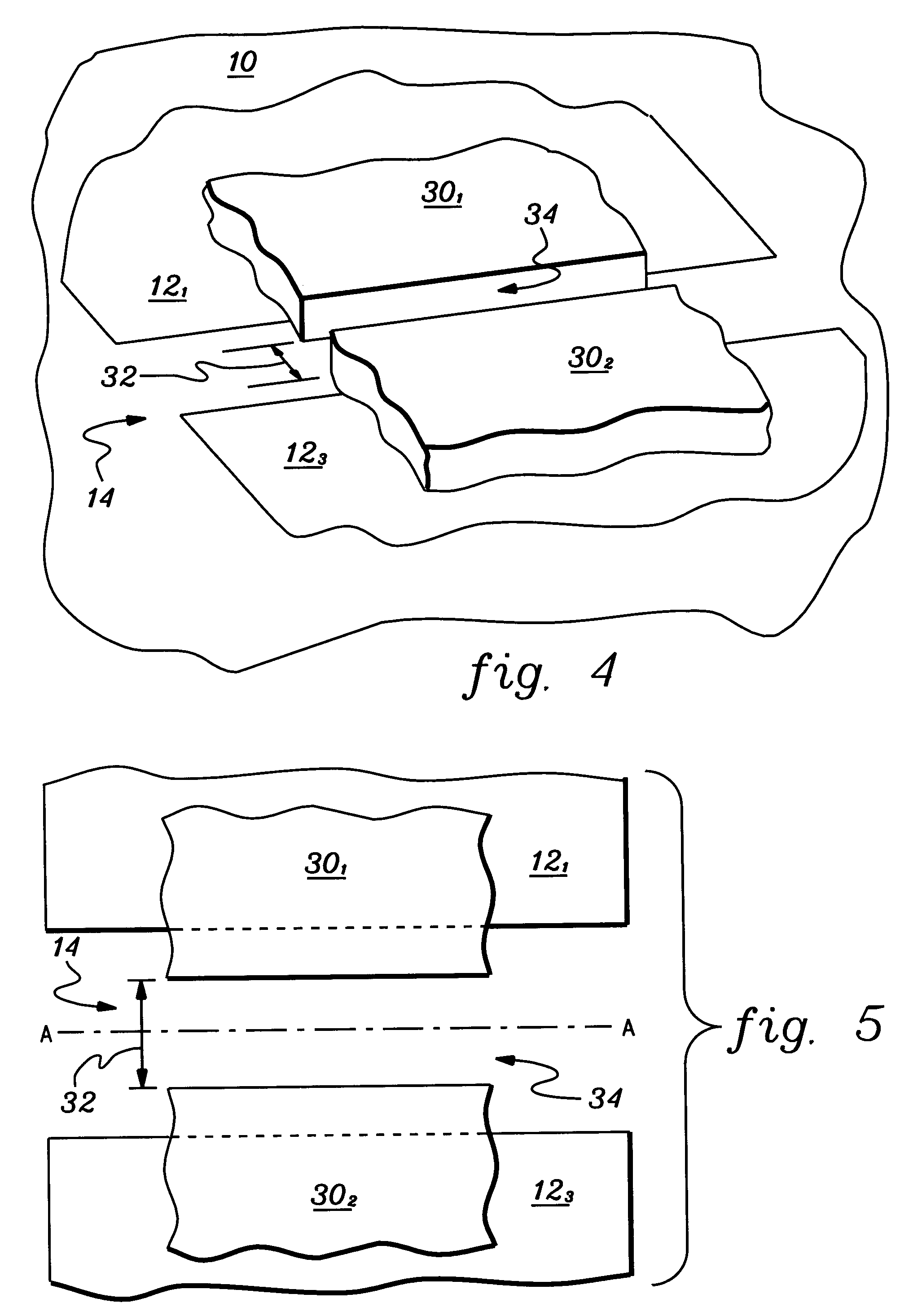X-ray fluorescence system with apertured mask for analyzing patterned surfaces
a fluorescence system and patterned surface technology, applied in the field of analytical instruments, can solve the problems of vacancies destabilizing atoms, difficult to narrow an x-ray beam to such widths, and extremely small feature sizes in chip regions of the ic that are difficult to measure directly with xr
- Summary
- Abstract
- Description
- Claims
- Application Information
AI Technical Summary
Benefits of technology
Problems solved by technology
Method used
Image
Examples
Embodiment Construction
[0027]An apparatus and associated analytical techniques are disclosed for effectively analyzing certain regions of patterned surfaces, while preventing other areas of the surface and undesireable beam scattering from negatively impacting the results. This technique is especially useful for analyzing test regions in the scribe lines between chip regions of an integrated circuit, using x-ray or other related equipment having certain minimal space and sample area requirements.
[0028]As discussed above, the small feature sizes currently forming patterned surfaces such as semiconductor ICs present certain analysis challenges. X-ray fluorescence (XRF), x-ray diffraction (XRD), and x-ray reflectivity (XRR) systems involve the use of radiation sources, optics, detectors which can be difficult to accurately place over sub-micron sample areas. Moreover, the excitation beam spot sizes, though dramatically improved to the 10 micron range in the last few years, are still larger than the IC featur...
PUM
| Property | Measurement | Unit |
|---|---|---|
| sizes | aaaaa | aaaaa |
| width | aaaaa | aaaaa |
| size | aaaaa | aaaaa |
Abstract
Description
Claims
Application Information
 Login to View More
Login to View More - R&D
- Intellectual Property
- Life Sciences
- Materials
- Tech Scout
- Unparalleled Data Quality
- Higher Quality Content
- 60% Fewer Hallucinations
Browse by: Latest US Patents, China's latest patents, Technical Efficacy Thesaurus, Application Domain, Technology Topic, Popular Technical Reports.
© 2025 PatSnap. All rights reserved.Legal|Privacy policy|Modern Slavery Act Transparency Statement|Sitemap|About US| Contact US: help@patsnap.com



